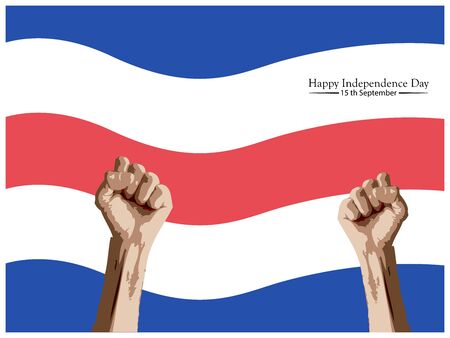Introduction to European Racing Culture
European motorsport has long been recognized as the cradle of organized auto racing, shaping the global landscape with its deep-rooted traditions and distinct philosophies. Originating in the late 19th and early 20th centuries, European racing culture developed around prestigious events such as the French Grand Prix, Le Mans 24 Hours, and the legendary Mille Miglia. These early competitions were defined by a spirit of innovation, technical excellence, and a strong emphasis on heritage—values that remain integral to European motorsport today. Unlike other regions where motorsport often evolved in parallel with mass-market entertainment or commercial interests, European racing cultivated a sense of exclusivity and reverence for craftsmanship. Hallmarks such as circuit-based road racing, manufacturer-led competition, and strict regulatory oversight distinguish European events from their American counterparts. This unique blend of tradition, engineering prowess, and sporting integrity has set a benchmark that continues to influence motorsport cultures around the world—including in the United States.
Early Transatlantic Motorsports Exchange
The early 20th century marked a transformative era for American motorsport, heavily influenced by transatlantic exchanges with Europe. As motor racing gained traction in both continents, the importation of European racing formats, vehicles, and driving talent fundamentally altered the American competitive landscape. The Indianapolis 500, first held in 1911, is a prime example; its format drew inspiration from prestigious European endurance races such as France’s 24 Hours of Le Mans and Italy’s Targa Florio. These events emphasized technical innovation and stamina over sheer speed, setting benchmarks that resonated within the U.S. motorsport community.
| European Influence | Adoption in America |
|---|---|
| Endurance Race Formats | Indianapolis 500, 12 Hours of Sebring |
| Vehicle Engineering (Grand Prix Cars) | Duesenberg and Miller racecars adopt European design cues |
| Driver Recruitment (International Talent) | European drivers invited to headline major U.S. events |
Technological advancements also flowed across the Atlantic. American manufacturers like Duesenberg and Miller began integrating advanced engineering principles pioneered by European brands such as Bugatti and Mercedes-Benz. These included overhead camshafts, superchargers, and lightweight chassis—innovations that rapidly improved both reliability and performance on American tracks. Furthermore, high-profile European drivers were often invited to compete in marquee U.S. races, bringing not just international flair but also new tactics and approaches to racing strategy.
This period set the stage for a continual exchange of ideas between continents. As American fans and organizers witnessed the sophistication of European racing culture, they increasingly sought to mirror its professionalism and technical rigor in domestic competitions—a trend that would only intensify in subsequent decades.

3. Adoption and Adaptation of European Styles
The integration of European racing styles and technologies significantly reshaped the landscape of American motorsport events. In the early to mid-20th century, American racing was largely dominated by oval track competitions, such as those seen in the Indianapolis 500. However, as American drivers, engineers, and promoters became increasingly exposed to European road courses and endurance races—most notably through international events like Le Mans and Formula One—a shift in perspective began to take root.
European road racing emphasized technical driving skills, complex circuits, and vehicle durability over extended distances. American organizers started to incorporate these elements into their own events, leading to the development of renowned road courses like Watkins Glen and Laguna Seca. These tracks challenged drivers with intricate layouts and variable terrain, contrasting sharply with traditional American ovals.
Technological exchange also played a vital role. Innovations such as disc brakes, independent suspension systems, and aerodynamic bodywork—first popularized in European competitions—were gradually adopted by American teams seeking a competitive edge. This infusion of technology not only elevated performance standards but also contributed to increased safety and reliability in domestic races.
Endurance racing, a staple of European motorsport, found its way into America through iconic events such as the 12 Hours of Sebring and the 24 Hours of Daytona. These races mirrored their European counterparts by demanding both mechanical resilience and strategic teamwork. The adaptation required American teams to rethink pit strategies, driver changes, and even car design, fostering a culture of innovation that persists today.
Overall, the adoption and adaptation of European styles catalyzed a transformation within American motorsport. By blending local traditions with international influences, the U.S. developed a more diverse and technologically advanced racing scene that continues to attract global attention.
4. Impact on American Motorsport Iconography
European racing has exerted a profound influence on the visual and cultural identity of American motorsport. From the sleek aesthetics of vehicle design to the architecture of race tracks and the structure of event formats, key elements from Europe have been adapted and transformed within the American context. This cross-pollination began in earnest during the mid-20th century, as American teams and manufacturers sought to compete with their European counterparts not just in performance, but also in style and presentation.
Evolution of Car Designs
One of the most noticeable impacts has been on car designs. The aerodynamic shapes pioneered by European marques like Ferrari and Lotus inspired American manufacturers to move away from boxy, utilitarian builds toward more streamlined silhouettes. This transition improved not only speed and handling but also elevated the prestige associated with American vehicles on a global stage.
| Era | American Design Traits (Pre-European Influence) | Post-European Influence |
|---|---|---|
| 1950s | Heavy, chrome-laden, larger frames | Lighter materials, curved lines, focus on aerodynamics |
| 1970s | Muscle cars with brute force emphasis | Integration of turbocharging, advanced suspension systems |
Transformation of Race Tracks
The adoption of European circuit layouts has also revolutionized American motorsport venues. Traditional oval tracks—once a staple of American racing—have increasingly given way to complex road courses featuring chicanes, elevation changes, and technical corners reminiscent of iconic tracks like Monza or Silverstone. This evolution has diversified driver skill sets and heightened spectator excitement.
Comparison of Track Features
| Track Type | Main Characteristics |
|---|---|
| Traditional Oval (Pre-European) | Sustained high speeds, minimal cornering complexity |
| Modern Road Course (European-influenced) | Varied turns, elevation shifts, strategic overtaking zones |
Event Formats: Endurance & Diversity
The format of American motorsport events has further evolved through European inspiration. While traditional races focused on sprint distances and single-driver entries, endurance racing—epitomized by events like Le Mans—has introduced multi-driver teams and longer timeframes. This shift has not only tested mechanical reliability but also strategic planning, teamwork, and adaptability under pressure.
Cultural Hybridization in Motorsport
This interplay between European innovation and American tradition has reshaped the iconography of U.S. racing culture. Today’s American motorsport scene reflects a blend: heritage muscle car spirit fused with Euro-inspired engineering precision; classic ovals interspersed with technically challenging circuits; event calendars that now feature both sprints and grueling endurance contests. The result is a dynamic environment where diversity in design, competition, and fan experience thrives—a testament to the enduring legacy of European influence on American motorsport.
5. Rise of International Competitions in the US
European racing’s profound impact on American motorsport is most evident in the emergence and growth of international competitions held within the United States. The introduction of events like the Formula 1 Grand Prix and the Le Mans series onto American circuits has transformed the domestic racing scene, infusing it with a global perspective and elevating the competitive standards.
The United States Grand Prix, first hosted at Sebring in 1959, marked a pivotal moment for American motorsports. This event brought together elite drivers and teams from across the globe, exposing American audiences to European racing philosophies, technologies, and strategies. Over time, venues such as Watkins Glen, Austin’s Circuit of The Americas, and Miami have become iconic stops on the Formula 1 calendar, reinforcing America’s status as a vital player in the world of international motorsport.
Similarly, the introduction of Le Mans-style endurance racing—most notably through events like the 24 Hours of Daytona and Petit Le Mans—has fostered a spirit of cross-continental collaboration. These races attract top-tier European manufacturers and teams, encouraging partnerships with American entities and facilitating technological exchange. The result is an environment where innovation flourishes and both continents benefit from each other’s strengths in engineering, race strategy, and driver development.
These international competitions have not only broadened the horizons of American fans but also inspired local talent to compete on a global scale. The presence of renowned European teams in U.S.-based events has set new benchmarks for performance and professionalism, prompting domestic teams to adopt advanced training methods and cutting-edge technology previously seen primarily in Europe.
Ultimately, by hosting globally recognized racing events, the United States has established itself as a hub for international motorsport. This ongoing exchange continues to break down cultural barriers within the racing community while pushing both American and European participants toward greater achievements. The synergy resulting from these interactions underscores how deeply European racing has shaped—and continues to shape—the landscape of American motorsport.
6. Lasting Influence and Modern Collaborations
The relationship between European and American motorsport organizations has evolved from early rivalry to an era of mutual respect, shared technology, and frequent collaboration. Today, the influence of European racing on American motorsport is evident in nearly every facet of the industry. Technical partnerships between American teams and European manufacturers are now commonplace, especially in series like IMSA and IndyCar, where chassis, engines, and even personnel often come from both continents. These collaborations have elevated the level of competition, pushing American teams to adopt more advanced engineering standards reminiscent of their European counterparts.
Modern motorsport events in the U.S., such as the Circuit of the Americas’ Formula 1 Grand Prix or the presence of Le Mans-style endurance racing through IMSA’s WeatherTech Championship, showcase this ongoing cross-continental exchange. Rules harmonization efforts—like the convergence of prototype regulations between IMSA and the FIA World Endurance Championship—demonstrate a strategic partnership designed to foster innovation and global participation. This process not only streamlines development but also allows manufacturers and drivers to compete internationally with minimal adaptation.
From a cultural perspective, American fans have grown increasingly appreciative of European racing traditions. Iconic events like Le Mans and Monaco are now part of mainstream motorsports dialogue in the U.S., while American circuits frequently host international series. Simultaneously, European organizations have recognized the value of the American market, leading to investments in U.S.-based races and talent scouting across both regions.
In summary, the synergy between European expertise and American showmanship continues to define modern motorsport. The persistent exchange of technology, talent, and ideas ensures that American racing remains at the forefront of innovation while honoring its European influences. Looking forward, this collaborative spirit is likely to further blur regional distinctions, fostering a truly global motorsport culture rooted in shared passion and continual evolution.


